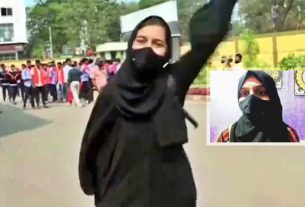Sat 06 July 2019:
In recent years due to poor infrastructure, lack of proper water policy, say experts
“Only rain can help us,” said a resident of Chennai, the capital of India’s southern state of Tamil Nadu, voicing her frustration over its mismanagement of a severe water crisis.
Shreya Singh, a consultant in central Chennai, has to wake up in the middle of the night every time to get water from private tankers for her family’s daily needs, including cooking, bathing and drinking water. The city’s public water supply was partially reduced in April. But since mid-June, supply has been completely cut off in her area, Singh told Anadolu Agency by phone. Chennai residents are now forced to depend on private companies selling water by tankers in main areas of the city and have to wait in long queues to obtain a few liters. “The problem is pretty serious here, and only rains can help the people. We are spending around 10,000 to 15,000 rupees [around $145-$220] per month to purchase water,” Singh said.
“To collect water, we have to get up in the dead of night and wait for the water tanker. The government has failed us. Now we are waiting for good rains, which are the only solution in sight.” Chennai, home to around 8 million people on the Bay of Bengal, is a popular tourist destination in the region. Hotels in the city are also facing tremendous difficulties while dealing with guests having limited or no water supply.
Last week, when India’s upper house of parliament was discussing the country’s water crisis, T.K. Rangarajan, a member of the upper house, said “a tank of private water costs more than one gram of gold, and now gold is cheaper in Chennai than water”. However, hotels now send notes to their guests prior to their arrival informing them about the situation. “Through letters, we are making them aware of the water crisis in Chennai,” Shabin Sarvotham, senior general manager at Radisson Blu Hotel Chennai, told Anadolu Agency.
Tamil Nadu state has passed through the driest seasons in the past two years and is now facing a water supply crisis due to low reservoir levels following a rainfall deficit. Groundwater supply has also decreased. “Due to severe neglect and lack of monitoring of water resources development projects, several regions in the country experience water stress from time to time,” a report released by the Central Water Commission (CWC) said recently. While Chennai is currently reeling from the water crisis, several reports suggest that the future for a number of other cities could be even worse.
A 2018 report by government think-tank Niti Aayog warned that 21 cities in India, including Delhi, Bengaluru, Chennai and Hyderabad, will run out of groundwater by 2020 and this will affect around 100 million people. It also said that 40% of Indians will have no access to drinking water by 2030. India is the largest user of groundwater — an underground resource that excludes lakes and reservoirs. Water experts blame local authorities for not implementing water management policies.
“Most cities have rules regarding rainwater harvesting, wastewater recycling and reuse, but enforcement is poor. City governments themselves do not prioritize sustainability planning,” Jyoti Sharma, founder of FORCE, an Indian NGO focused on water and sanitation, told Anadolu Agency. Himanshu Thakkar from the South Asia Network on Dams, Rivers and People, an informal network of organizations and individuals working on issues related to the water sector, said the problem is getting more and more precarious with every passing year. He said urban development on water bodies is one of the reasons. “India’s urban water footprint is increasing by leaps and bounds, but unfortunately, a large part of our urban development is happening on the deathbed of water bodies,” he said.
Thakkar believes that India needs a national water policy. “We urgently need a national urban water policy that will guide the urban water subsectors and define what is a water-smart city. The destruction of water bodies everywhere must urgently stop,” he said. “The groundwater is India’s water lifeline, but the water resources establishment refuses to acknowledge that reality in water policies, programs or plans.” The government accepted the situation, blaming nature, and vowed to take necessary steps to resolve the crisis.
“The challenge of providing water to 17% of the world’s population [which lives in India] with just 4% of the water in the world available with us is the next big challenge facing the country,” Water Minister Gajendra Singh has said. “The new ministry [the government has created to respond to the water crisis] can do three things to start the process, including looking at the comprehensive assessment of its water resources, its use to find out where it is wasting the resources, and introducing serious measures to improve the water productivity of major crops, particularly paddy,” Biksham Gujja, a water resources expert, told Anadolu Agency.
Think your friends would be interested? Share this story!





